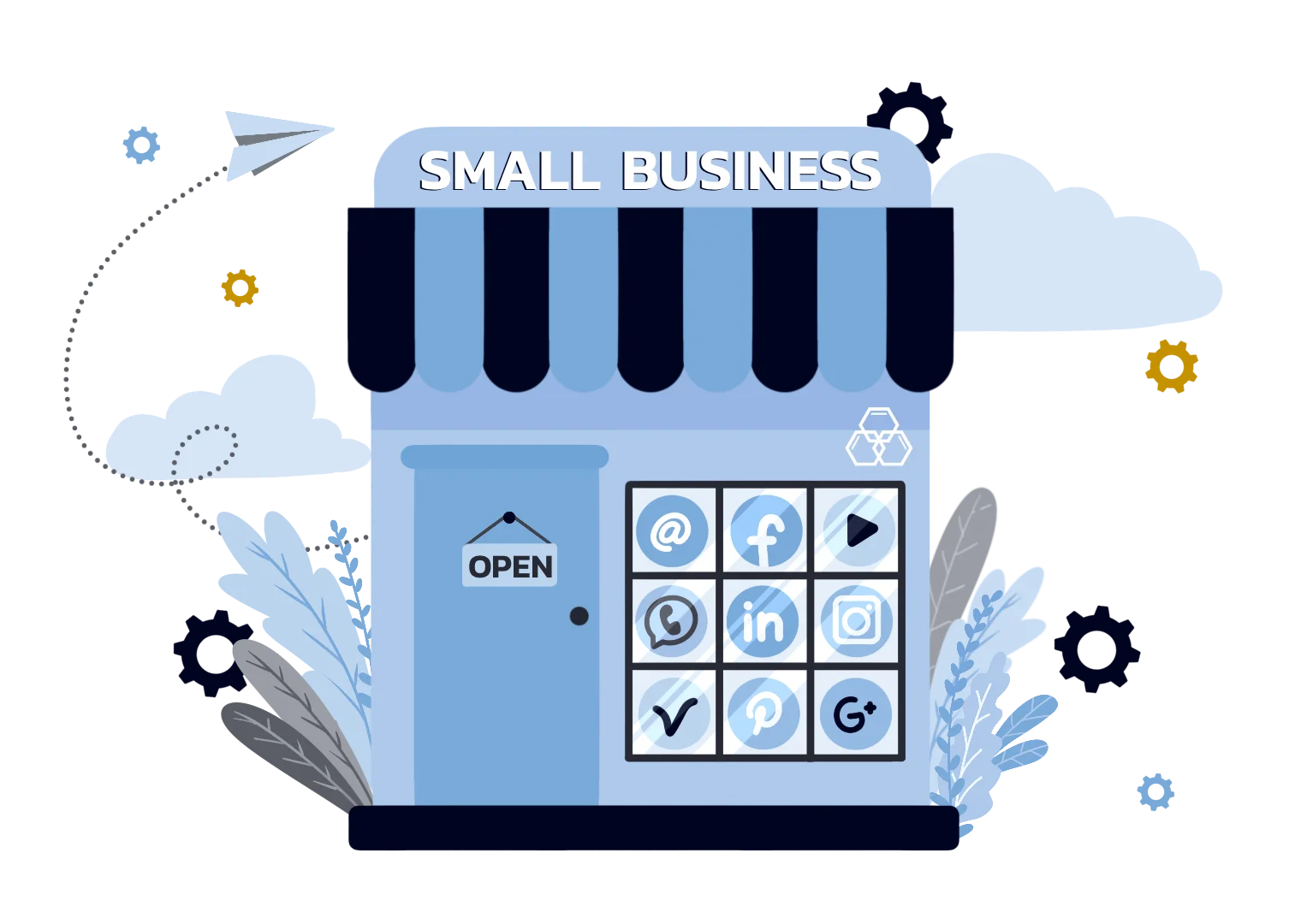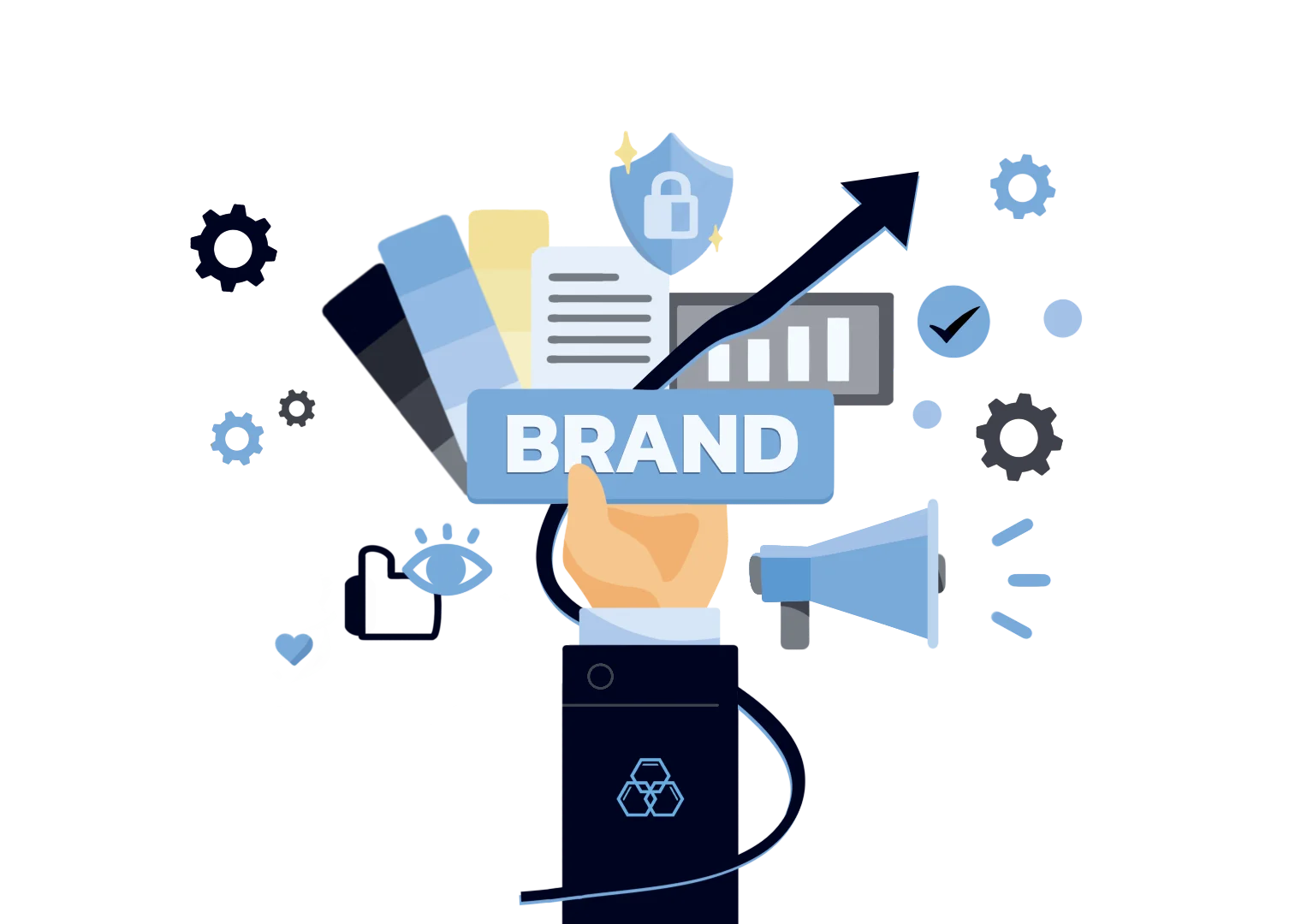Marketing strategy and tactics are two key elements of a successful marketing campaign. It's a common question, and it's one that brand marketing teams get a lot. Many people think that marketing strategy and tactics are interchangeable, but they're not. Here’s why.
What is a Marketing Strategy?
Marketing strategy is all about the big picture and how you plan to achieve your goals as a marketer. It's about deciding what your brand stands for and how you'll communicate that message to your audience.
Marketing strategy often sets goals on a long-term basis and on a higher view of how an entire marketing campaign is supposed to go.
Examples of marketing strategies are: Build brand awareness, influencer marketing, getting new customers, and building brand loyalty.

What is a Marketing Tactics?
Marketing tactics are all the actionable steps that help you communicate and interact with your audience. In itself, marketing tactics don't have anything to do with sharing your brand's identity or vision, but they serve as measurable building blocks that make up the marketing strategy.
Examples of marketing tactics include building a website, creating social media accounts, and writing online blogs. By themselves, they don't fully represent company values, but they serve under digital marketing.
Why is Strategy and Tactics Important in Marketing?
A comprehensive marketing strategy provides a clear sense of direction and purpose for all marketing efforts. It outlines the "what" and "why" of marketing, defining the goals and objectives to be achieved. Marketing tactics realize them through actionable steps that stack successes that make up the objectives of a marketing campaign's roadmap.
And your marketing must make sure that you plan both marketing strategies and tactics together, or your campaign will certainly falter.
Strategy Without Tactics
Here’s what happens when you develop a strategy without its tactics:
1. Lack of Execution: A marketing strategy focuses on the the "what" and "why" of marketing, setting goals, identifying target audiences, and determining the brand's positioning. However, without tactics, there is no execution of these plans.
2. No Measurable Results: Tactics are necessary for translating strategic goals into specific, measurable actions. Without tactics, it becomes challenging to track and measure progress or success.
3. Resource Underutilization: Resources, including budget, personnel, and time, may not be utilized efficiently without tactics. A strategy can allocate resources, but tactics provide the practical means to make the best use of those resources.
4. Lost Opportunities: Marketing opportunities are often time-sensitive, and without tactics to capitalize on these opportunities, you may miss out on potential leads, sales, or engagement with your target audience.
5. Ineffectiveness: The most well-crafted strategy is ineffective if it's not implemented. Tactics are the actionable means by which you reach your audience, create content, run campaigns, and engage with customers.
Tactics Without Strategy
Here’s what happens when you develop tactics without strategies:
1. Lack of Direction: Marketing tactics focus on specific actions to achieve short-term goals, but they lack the overarching purpose and long-term vision provided by a strategy.
2. Incoherence: When tactics are deployed without an overarching strategy that dictates the overview of the objectives, there's a risk of disjointed and inconsistent marketing efforts.
3. Missed Opportunities: While tactics may yield some immediate results, they may not be aligned with the larger business goals and objectives.
4. Resource Inefficiency: Without a strategy, it's challenging to allocate resources effectively as you might invest time and budget into tactics that do not contribute to your broader marketing or business objectives.
5. Reactivity Instead of Proactivity: Marketing tactics without a strategy often lead to a reactive approach, where you respond to immediate needs or trends rather than proactively shaping your marketing efforts in line with your business goals.
6. Lack of Measurement and Adaptation: A strategy provides the framework for setting goals and key performance indicators (KPIs). Without this framework, it can be difficult to measure the success of your tactics, adapt to changing circumstances, or make data-driven decisions.
Difference between Marketing Strategy and Tactics
Here are the differences between marketing strategy and tactics:
Marketing Strategy
1. Definition - A high-level strategic planning that sets the overall direction and purpose for marketing efforts.
2. Focus - Defines the "what" and "why" of marketing, emphasizing goals, target audience, and value proposition.
3. Scope - Encompasses broader organizational objectives and market positioning of the brand.

4. Timeframe - Generally a long-term view, offering a marketing plan for future success.
5. Competitive Advantage - Establishes a unique value proposition and competitive advantage.
6. Resource Allocation - Guides the allocation of resources, including budget, personnel, and time.
7. Flexibility - Less flexible and open to change compared to tactics.
8. Measurement - Focuses on high-level key performance indicators (KPIs) related to overall success.
Marketing Tactics
1. Definition - Specific, actionable steps taken to implement the marketing strategy.
2. Focus - Addresses the "how" of marketing, specifying methods and activities to achieve strategic objectives.
3. Scope - Narrower in scope, focusing on specific marketing channels and activities.
4. Timeframe - Typically shorter-term actions aimed at achieving specific goals.
5. Competitive Advantage - Executes the strategy and may not directly create a competitive advantage on its own.
6. Resource Allocation - Involves detailed resource allocation for specific campaigns and actions.
7. Flexibility - Highly flexible and adaptable to real-time data and feedback.

8. Measurement - Tied to specific, measurable outcomes often linked to performance metrics.
What are some examples of Marketing Strategy?
Strategy is a plan for achieving marketing objectives. So what does strategy include? Let's break it down. It consists of the following:
- Market Research: You need to know who you are selling to and what they want.
- Insight: You need to know what they need and how you can provide it.
- Target Market: You need to know who will buy your product or service.
- Goals and Objectives: You need a clear purpose. For example, you increase sales by 10% or reduce costs by 20%.
- Brand Positioning: How should your brand be positioned in the market? This is often called positioning.
- Budget and Ad Spend: What is your budget for advertising? What are your plans for spending that money?
- Tactics: What tactics do you plan to use when advertising your product or service? For example, TV ads, radio spots, print ads, web banners?
- Success metrics: What metrics will you use to measure the success of your campaign?
If you have a clear understanding of your business goals and what it will take to achieve them, you are well on your way to developing a successful marketing strategy.
What are some examples of Marketing Tactics?
The best marketing tactics are those that can reach your target audience in a way that's easy for them to understand. They include:

Social media marketing: Sharing content on social media platforms like Facebook and Instagram promotes your business or products/services.
Content marketing: Generating leads online through blogs, tools, and guides that primarily seek to help the audience and therefore stimulate interest in the brand.
Search engine click ads: Paying Google (or another search engine) to show up higher on its results page when someone searches for things related to what you're offering.
Native ads: Making sponsored content that matches the look and feel of the platform on which it is displayed. It is created not to disrupt the user experience and blend in with the platform.
OOH ads: Also called out-of-home advertising, any visual advertising media found outside the home, such as billboards.

Email marketing: Emailing potential customers about your products/services, promotions, etc.

Experiential ads: Directly engaging with your target customer through creative and memorable interactions from a more personal angle.
SMS ads: Sending text messages to people's phones that contain information about your company or product and asking them to opt into further contact.
Telemarketing: Calling people up and trying to sell them something over the phone.
Marketing tactics are like a toolbox—you have a bunch of different tactical marketing techniques, and you can use them in any combination to get your brand into the hands of your target customers.

How to Create a Strong Marketing Strategy?
To conceptualize a strong marketing strategy, you must start by setting clear, measurable, and strategic marketing objectives. What do you want to achieve with your marketing efforts? Whether it's increasing sales, brand awareness, customer retention, or market share, your objectives should be specific and tied to your overall business goals.
The second thing to understand is your ideal target customers. You need to create and detail your buyer personas, including demographics, behaviors, needs, and preferences. This knowledge will help you tailor your marketing to efficiently and cost-effectively reach and engage your audience, as these customers are the most willing to purchase your product and service.
The third thing to do is to conduct thorough market research to identify industry trends, customer pain points, and the competitive landscape. Understand where your competitors excel and see how you can apply their achievements to position your brand effectively.
After thoroughly researching your market, audience, and competitors, you need to define what sets your brand apart from the competition, also known as your Unique value proposition. You should highlight your products or services' benefits and why they are better than alternatives, or position yourself in other ways, like focusing on your values as a company or your social advocacy.
After you’ve set the roadmap and have defined your marketing mix, you need to identify the key performance indicators (KPIs) to track and measure the success of your marketing efforts. Use analytics tools to monitor your progress and adjust your strategic marketing plan as needed.

How to Create Strong Marketing Tactics?
Before diving into tactics, thoroughly understand your marketing strategy. Your tactics should be in alignment with your overall marketing goals and objectives. Next is to define the goals for each tactic clearly; goals must be specific, measurable, attainable, relevant, and time-bound. After that, you need to develop detailed plans for each tactic. Outline the steps, resources, and budget required to execute the tactic effectively. Consider creating a marketing calendar to schedule activities.
Use analytics tools to track the performance of every marketing tactic. Monitor the metrics that are relevant to your goals, such as website traffic, click-through rates, conversion rates, and customer engagement metrics. Adjust and refine your tactics as necessary, and should be based on your analysis. Identify what's working and what's not, and make data-driven decisions to improve your tactics.
Know your Strategy and Tactics!
Knowing the difference between strategy and tactics in marketing definitely helps your marketing campaigns. it allows you to align efforts with overarching objectives, optimize resource allocation, adapt to changing conditions, and measure performance accurately. It fosters a strategic approach that drives success and maximizes ROI in a rapidly evolving marketing landscape.
Let us know how Evolv can help you develop your marketing strategies for your brand as well as what tactics should accompany them. We are a group of marketing professionals driven to help you succeed and maximize your ROI in a rapidly evolving marketing landscape. You can also check out our blog and see what else you should learn about marketing and all its aspects and trends business owners should know.






